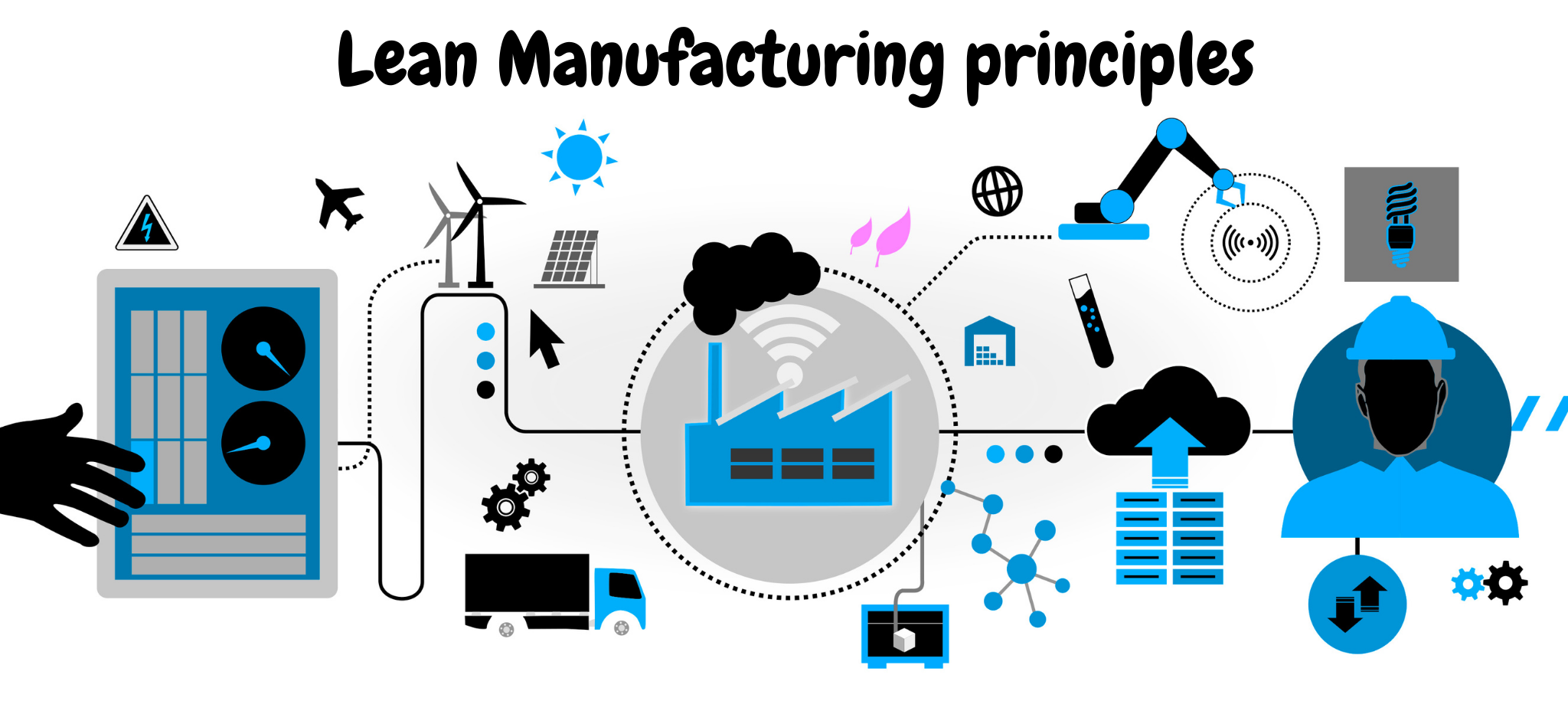
How Lean Manufacturing Can Improve Your Bottom Line
Prashanth
- 0
- 202
The Lean Manufacturing industry is becoming mainstream and it’s a great opportunity for organizations to gain an edge. But for those companies looking to make the transition, the time is now. In the last few years, we’ve seen a growing trend as businesses seek to use the Lean Manufacturing principles to create more value during the transformation process and for the long term.
Although Lean Manufacturing provides an opportunity to improve the value-creation process and enhance performance, it’s not easy for any organization to adapt. Organizations need a well-defined strategy, a set of clearly articulated objectives, and an implementation plan that meets the needs of the individual business case.
Lean manufacturing is a systematic process that brings about efficiency, effectiveness, and continuous improvement in manufacturing and has become a core competency of manufacturing companies.
Here are five tips to ensure that Lean adoption is successful in your business:
1) Identify the areas where you can build value using the Lean Manufacturing principles so that you don’t have to implement the process into all operations.
2) Determine the impact that Lean Manufacturing has on key KPIs, such as revenue, cost of goods, cycle time, and inventory levels.
3) Identify the key changes that need to be made to the business’s processes to make it more efficient.
4) Define what the organization’s goals should be.
5) Make sure that you have the right people for the job.
Seven wastes are identified in the lean manufacturing system: overproduction, inventory, motion, defects, over-processing, waiting, and transport.
Lean Manufacturing’s benefits
Seven wastes are identified in the lean manufacturing system: overproduction, inventory, motion, defects, over-processing, waiting, and transport.
-It helps improve the value-creation process and it helps you improve your business. It is a systematic approach that helps to reduce waste, increase customer satisfaction and make the company more successful.
-It shortens the time it takes to make decisions and reduces the number of decisions a company has to make.
-It helps to improve the quality and safety of products, which in turn reduces the costs associated with product recalls. Increasing the effectiveness and efficiency of production processes ensures that there is no product defect or wastage.
-It helps organizations get out of the business of making production decisions and focus on making business decisions.
-It can reduce the number of time employees spend on unnecessary activities and the number of decisions an organization has to make.
-It reduces cost and inventory level, resulting in reduced overhead costs.
Impact on KPIs
Revenue :
When we talk about revenue we can talk about three separate categories depending on the time:
1st category : Revenue that we could have had but that we didn’t because of a constraint such as the capacity of a machine or the availability for the right input material: this is the cost you could have saved.
2nd category: the ‘extra money’ we gain as a result of lean: This is the ‘extra money’ that you receive in addition to the constraints identified during the analysis (and that we could have avoided)
3rd category: the savings generated by lean improvements: this is the ‘extra money’ you get on top of your lean improvements, meaning the ‘extra money’ you get on top of what you could have gained on top of the previous improvements.
Cost of Goods Sold
When we talk about cost of goods sold we are basically talking about the ‘extra money’ you get on top of the cost of goods that you could have bought but that you didn’t because of the constraints that you identified during the analysis.
Cycle Time
A decrease of cycle time means ‘extra money’ that you could have gained. A decrease in the quantity of cycle time that you could have gained means that you have a gain bigger than the one you could have gained. So you need to compare the decrease in the quantity of cycle time (quantity of money you gained) to the decrease in the quantity of cycle time that you could have gained.
Inventory Levels
When we talk about inventory levels we are basically talking about how much money you put aside on top of the money that you have lost (due to the decrease of cycle time). This is money that you could have saved.
Analyzing all the above categories, we can have a ‘lean’ report that tells us everything we want to know about our situation and how it has evolved since the beginning of the Lean journey.
Improvement in employee satisfaction and collaboration
Increase in customer and service satisfaction: Lean Manufacturing enables organisations to focus on customer expectations and meet them. With Lean, an organisation is able to deliver solutions that are better and more effective and efficient than those delivered through traditional processes.
Improved communication, transparency, and collaboration: Lean Manufacturing encourages a culture of transparency, collaboration and sharing of ideas. Lean also enables effective communication of processes with the overall aim of improvement.
Improved employee engagement: The Lean philosophy focuses on the people, processes, and culture and encourages employees to become more engaged and motivated. The philosophy of the Lean Way of Thinking encourages the use of techniques and tools that help employees to become more self-directed and motivated. The philosophy of Lean also focuses on how an organisation operates in the marketplace and how it can meet customer expectations.
Impact on Key Processes
Identify what the organization’s goals should be :
The first step would be to make sure that you know what the organization’s goals are. Use Vision, Mission and Values (VMV) to guide you. This enables the organization to align itself with the organization’s objectives.
Determine the impact that Lean Manufacturing has on Key KPIs and processes :
Once you have identified the organization’s goals, you can start to get an idea of how the Lean manufacturing approach can help achieve them. The main KPI or key performance indicators that you should be looking at are Time-to-market, Quality, Performance and Cost. In doing so, you can start to identify what the impact of Lean Manufacturing could be on these KPIs and the organization’s processes themselves.
Identify the key changes that need to be made to the business’s processes to make it more efficient :
Once you have determined what the organization’s KPIs and processes are, you can start to look at the changes that need to be made in order to improve those KPIs. By using the PDCA cycle, you can start to develop a process improvement plan and identify the areas where improvements can be made and the types of changes that need to be made to the business’s processes.
Make sure that you have the right people for the job, and that they have the relevant skills, knowledge, and experience :
This is key as well. You don’t want to hire people who are not the right people for the job. If you do so, it could have an adverse effect on the organization in the long run. Also, make sure that you hire people with the relevant skills, knowledge, and experience. By doing so, you can avoid the situation where you have to retrain people who have been with the organization for a very long time.
Conclusion
The Lean Manufacturing industry is gaining popularity because organizations are beginning to understand how the principles can lead to positive outcomes. It’s important, however, for companies taking the plunge to have a deep understanding of the principles and all their benefits. Adopting the right concepts and principles of Lean management can be challenging. But with a good strategy, you may see improvement in all your key metrics, including cost reduction, process improvement, time-to-market, and quality.
In conclusion, lean manufacturing is a valuable process to implement in your business. It can help you improve efficiency, increase production, and reduce costs. There are several tips you can use to get started with lean manufacturing, and the process can be customized to fit the specific needs of your business.
Can be reached via email at 01prashanth@gmail.com or a private message on LinkedIn if you would like to discuss this topic further.

